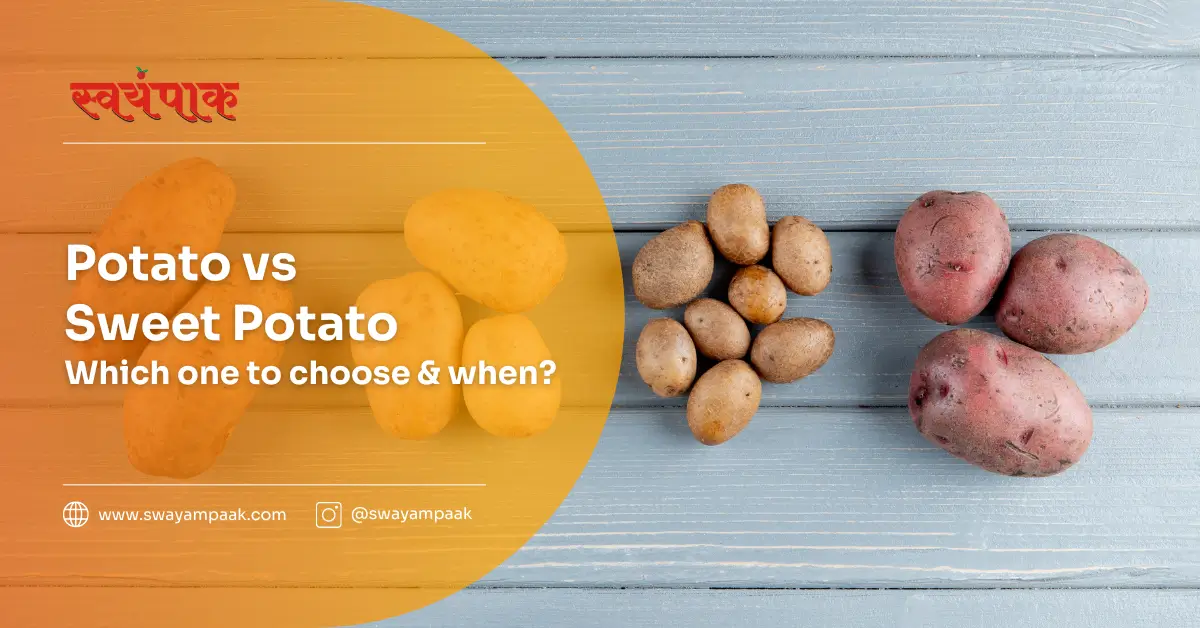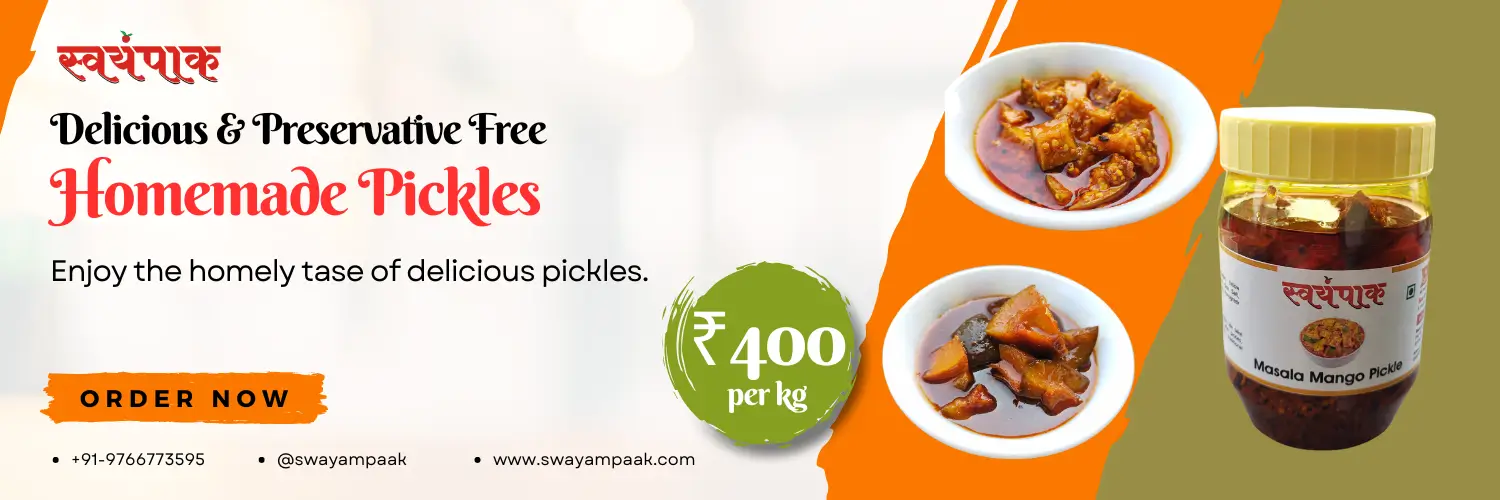Potatoes and sweet potatoes are staples in many diets around the world. While they may share a similar name and both belong to the tuber family, potatoes and sweet potatoes are quite distinct in terms of their nutritional profiles, health benefits, and culinary uses.
This article on potato vs sweet potato, delves into a comprehensive comparison between these two beloved root vegetables, helping you understand their differences and how to best incorporate them into your diet.
- Homemade Pickles
- Potato vs Sweet Potato: The Basics
- Nutritional Profiles: Potato vs Sweet Potato
- Health Benefits: Which is Better for You?
- Culinary Uses: Versatility in the Kitchen
- Taste and Texture: A Sensory Experience
- Dietary Considerations: Allergies and Intolerances
- Environmental Impact: Sustainability and Farming Practices
- Historical and Cultural Significance: Potato vs Sweet Potato
- Cooking Tips: Potato vs Sweet Potato
- Conclusion
Potato vs Sweet Potato: The Basics
Understanding Potatoes
Potatoes (Solanum tuberosum) are starchy tubers native to the Andean region of South America. They are part of the nightshade family, which includes tomatoes, eggplants, and peppers. Potatoes come in various types, including russet, red, yellow, and fingerling, each with unique textures and flavours suitable for different culinary applications.
Understanding Sweet Potatoes
Sweet potatoes (Ipomoea batatas), on the other hand, are native to Central and South America and belong to the Morning Glory family. Unlike regular potatoes, sweet potatoes have a natural sweetness and come in various colours, including orange, purple, and white. The orange-fleshed varieties are particularly rich in beta-carotene, a precursor to vitamin A.
Nutritional Profiles: Potato vs Sweet Potato
Macronutrients
Potatoes are primarily composed of carbohydrates, with moderate amounts of protein and very little fat. A medium-sized potato (about 173 grams) provides approximately:
- 161 calories
- 37 grams of carbohydrates
- 4 grams of protein
- 0.2 grams of fat
- 4 grams of fiber
Sweet potatoes also have a high carbohydrate content but offer slightly more fibre and less protein compared to regular potatoes. A medium-sized sweet potato (about 130 grams) contains roughly:
- 112 calories
- 26 grams of carbohydrates
- 2 grams of protein
- 0.1 grams of fat
- 4 grams of fiber
Vitamins and Minerals
Potatoes are a good source of vitamin C, potassium, and vitamin B6. They also contain smaller amounts of other vitamins and minerals, including magnesium, phosphorus, and niacin.
Sweet potatoes excel in their vitamin A content, with one medium sweet potato providing more than 400% of the recommended daily intake. They are also rich in vitamin C, potassium, and manganese, making them a powerhouse of nutrients.
Health Benefits: Which is Better for You?
Benefits of Potatoes
- High in Potassium: Potatoes are one of the best sources of potassium, which is essential for maintaining healthy blood pressure levels and proper muscle function.
- Rich in Vitamin C: This vitamin is crucial for immune function, skin health, and the absorption of iron from plant-based foods.
- Energy Source: The carbohydrates in potatoes provide a quick and efficient source of energy, making them ideal for athletes and those needing an energy boost.
Benefits of Sweet Potatoes
- Rich in Beta-Carotene: The high beta-carotene content in orange sweet potatoes supports eye health and boosts the immune system.
- Anti-Inflammatory Properties: Sweet potatoes contain various antioxidants that can help reduce inflammation in the body.
- Blood Sugar Regulation: Despite their sweetness, sweet potatoes have a low glycemic index, meaning they have a more gradual impact on blood sugar levels, making them suitable for people with diabetes.
Culinary Uses: Versatility in the Kitchen
Cooking with Potatoes
Potatoes are incredibly versatile and can be prepared in numerous ways, including boiling, baking, roasting, frying, and mashing. Some popular dishes featuring potatoes include:
- Mashed Potatoes: A classic comfort food made by mashing boiled potatoes with butter, milk, or cream.
- French Fries: Deep-fried potato strips that are crispy on the outside and soft on the inside.
- Potato Salad: A cold dish made with boiled potatoes, mayonnaise, mustard, and various seasonings.
Cooking with Sweet Potatoes
Sweet potatoes also lend themselves to a variety of cooking methods such as baking, roasting, steaming, and mashing. Popular sweet potato dishes include:
- Sweet Potato Fries: Baked or fried strips of sweet potatoes, often seasoned with spices like paprika or cinnamon.
- Sweet Potato Casserole: A traditional holiday dish made with mashed sweet potatoes, topped with marshmallows or a pecan crumble.
- Roasted Sweet Potatoes: Cubed and roasted with olive oil, salt, and herbs for a simple yet delicious side dish.
Taste and Texture: A Sensory Experience
The Taste of Potatoes
Potatoes have a neutral, earthy flavour that makes them a versatile ingredient in both savoury and sweet dishes. The texture can range from fluffy and creamy in russet potatoes to waxy and firm in red or fingerling potatoes.
The Taste of Sweet Potatoes
Sweet potatoes have a naturally sweet and nutty flavour, which becomes more pronounced when cooked. The texture is generally softer and creamier than that of regular potatoes, especially in the orange-fleshed varieties.
Dietary Considerations: Allergies and Intolerances
Potato Allergies
Potato allergies are relatively rare but can occur. Symptoms may include skin rashes, itching, and digestive issues. Some people may also be sensitive to glycoalkaloids, natural compounds found in nightshade vegetables, which can cause gastrointestinal discomfort.
Sweet Potato Allergies
Sweet potato allergies are even rarer. However, as with any food, it’s possible to have an allergic reaction. Symptoms may include itching, swelling, and difficulty breathing.
Environmental Impact: Sustainability and Farming Practices
Growing Potatoes
Potatoes are a relatively low-impact crop, requiring less water and fewer pesticides compared to many other vegetables. They can also be grown in a variety of climates and soil types, making them a sustainable choice for many regions.
Growing Sweet Potatoes
Sweet potatoes are similarly environmentally friendly. They are hardy plants that can thrive in poor soil conditions and are resistant to many pests and diseases, reducing the need for chemical inputs. Additionally, sweet potatoes can be grown in a range of climates, from tropical to temperate regions.
Historical and Cultural Significance: Potato vs Sweet Potato
The History of Potatoes
Potatoes have a long history dating back over 7,000 years to the Andes Mountains of South America. They were a staple food for the Inca civilization and later spread to Europe and the rest of the world after the Spanish conquest of the Americas. Today, potatoes are a global food staple and a crucial part of many traditional cuisines.
The History of Sweet Potatoes
Sweet potatoes also have ancient roots, with evidence of cultivation in Central and South America dating back thousands of years. They were a vital crop for indigenous peoples and were spread to other parts of the world by European explorers. In many cultures, sweet potatoes hold significant cultural and culinary importance, especially in African, Asian, and Caribbean cuisines.
Cooking Tips: Potato vs Sweet Potato
Tips for Cooking Potatoes
- Choose the Right Potato: Different types of potatoes are suited for different cooking methods. Russet potatoes are great for baking and mashing, while red or new potatoes are better for boiling and salads.
- Don’t Overcook: Overcooking potatoes can make them mushy and waterlogged. Aim for a tender but firm texture.
- Season Well: Potatoes absorb flavours well, so be generous with seasonings like salt, pepper, garlic, and herbs.
Tips for Cooking Sweet Potatoes
- Keep the Skin On: The skin of sweet potatoes is edible and packed with nutrients. Wash them thoroughly and cook with the skin on them for added fibre and vitamins.
- Balance the Sweetness: Pair sweet potatoes with savoury ingredients like herbs, spices, and cheeses to balance their natural sweetness.
- Experiment with Spices: Sweet potatoes pair well with a variety of spices, including cinnamon, nutmeg, cumin, and paprika.
Conclusion
In the great debate of potato vs sweet potato, both have their unique advantages and are valuable additions to a healthy diet. Potatoes offer a versatile, starchy option rich in potassium and vitamin C, while sweet potatoes provide a nutrient-dense, sweet alternative packed with beta-carotene and antioxidants.
By understanding their differences in nutritional profiles, health benefits, culinary uses, and environmental impacts, you can make informed choices about which tuber best suits your dietary needs and preferences. Ultimately, incorporating both into your diet can provide a balanced and flavorful array of nutrients and culinary possibilities.


